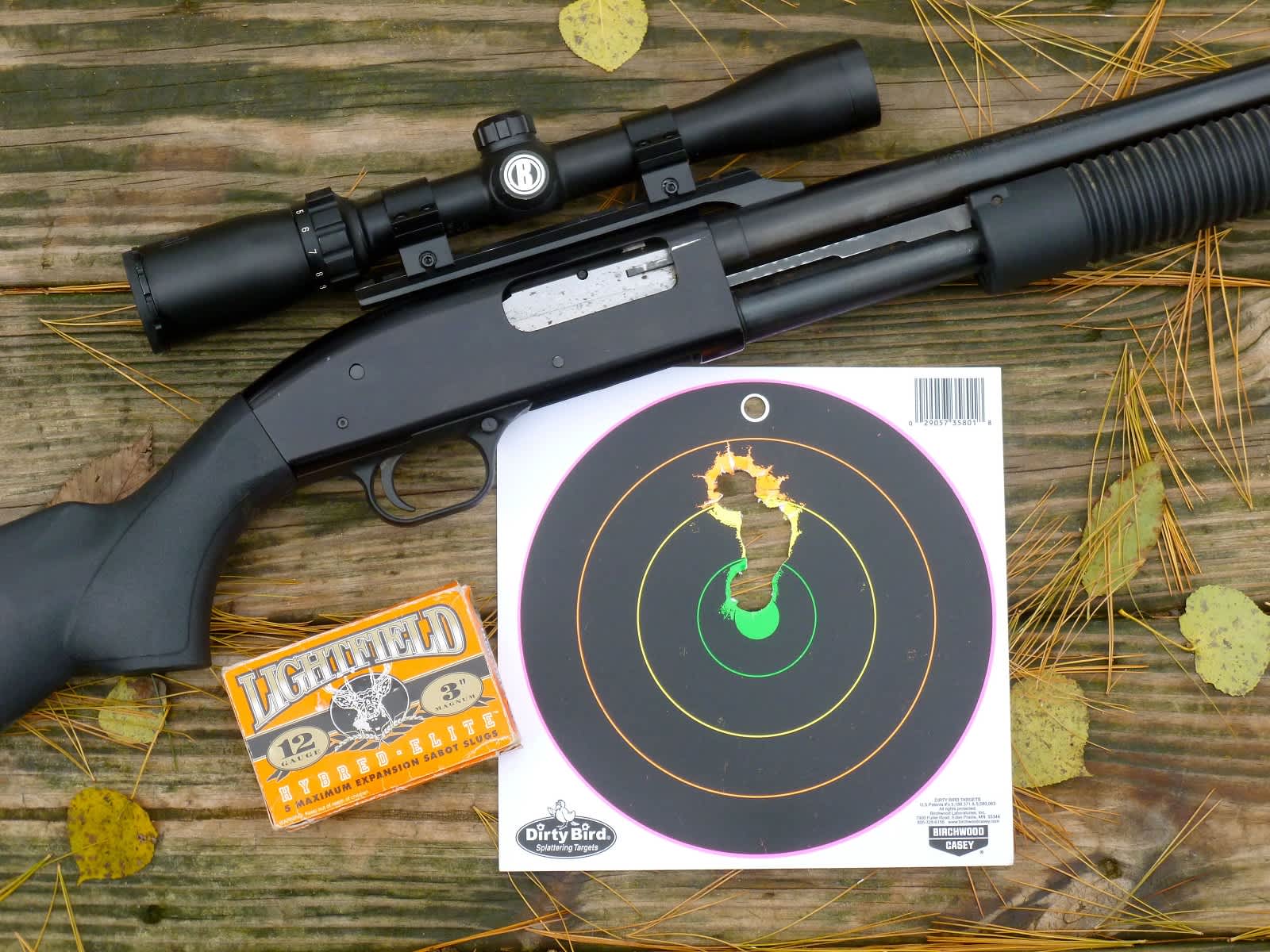Michigan Slug Hunters Sight-in: Ensuring Shotgun Accuracy
Dave Mull 11.04.13

Although Michigan’s firearm deer season is just a little over a week away, hunters limited to shotguns in the more densely populated southern tier of the state still have time to make sure their firearms can place a slug where the shooter wants it to go.
But according to leading experts on shooting slugs, sighting in many shotguns to shoot accurately is slightly more involved than sighting in a rifle.
That’s especially true of the popular pump-action shotguns that many hunters use. Pump guns are top choices among Michigan hunters, who use them for upland game with a longer, smoothbore barrel, then switch to a rifled barrel for the firearm deer season.
“Hunters who switch out barrels really should sight-in the shotgun every time the rifled barrel gets reinstalled,” says John Clark, a veteran slug shooter and firearms instructor who does most of his deer hunting in the Battle Creek area of southern Michigan. “Plus, if a hunter is serious about taking a deer, sighting the shotgun is a good time to practice for shooting accurately when a deer comes into shooting range. Hunters should be confident in their ability to hit what they’re aiming at and there’s no substitute for going to a range or setting up a range and popping some caps at a target.”
Clark says that pumps need special attention because of the inherent looseness of the forend that the hunter “pumps” to eject shells.
“The forend on the shotgun has some side-to-side play that can cause a slug to go off target,” says Clark. “The most important thing when it comes to consistent accuracy is to be aware of that play—and to get rid of it.”
Accomplishing that goes against what many shooters are initially taught about firing long guns.
“Just about all of us were taught to relax and not grip the forend too tightly when we learned how to shoot rifles,” Clark says. “With a pump shotgun, you not only have to grip the forend fairly tightly, but you also have to torque it to one side to eliminate the play, and to keep the barrel from rising immediately upon squeezing the trigger. Slugs take longer than rifle bullets to get out of the barrel, so you don’t want the shotgun to jump up when the slug is still in the barrel.”
How you sight-in and practice with your shotgun should be based on how you anticipate shooting it during deer season, Clark says.
“After you make sure your scope is sighted-in accurately, you should take some practice shots in different positions to represent how you are likely to shoot it when in the woods or field after a deer,” Clark says. “If you’re one of the many Michigan hunters who is a stump sitter, practice shooting sitting down without a benchrest in front of you. If you prefer still-hunting or stalking and anticipate taking a deer from a standing position, you should definitely make sure you can drill a target while you’re standing up and shooting freehand or steadying yourself against a tree.”
Clark also offers some advice on picking slug loads, whether it’s a rifled slug for smoothbore barrels or a sabot slug for rifled barrels.
“Don’t overpower yourself,” he says. “It’s tempting to buy the most powerful slug loads you can find, but most of those are going to deliver a wallop to your shoulder and cheek with every shot, which can make them actually painful for target practice. That’s especially true when you’re trying to duplicate an actual hunting set-up and not using a shooting bench and weighted rifle rest.”
He noted that plenty of mid-range loads with ample knockdown power are available to shotgunners.
“The important thing is to find a slug load that you’re comfortable shooting and that you’re confident about hitting the vitals of a deer with,” he says.
One final bit of advice is know the distance to the deer you’re going to shoot.
“Practice with a rangefinder so you can figure out how far an animal is so you can make an accurate shot,” he says. “Shotgun slugs lose velocity and drop in a hurry, and even light side-winds can push them around when you’re making a longer shot. I recommend that hunters use rifled barrels and the slimmer sabot slugs, which have less resistance in the air and are less affected by side winds. And until you’ve practiced and can get a good group at 100 yards, limit your shots at deer to 50 or 75 yards. That last 25 yards can make a big difference when it comes to accuracy and delivering a lethal shot.”
For more information on Michigan hunting go to michigan.org. Click here to purchase a Michigan hunting license online.

